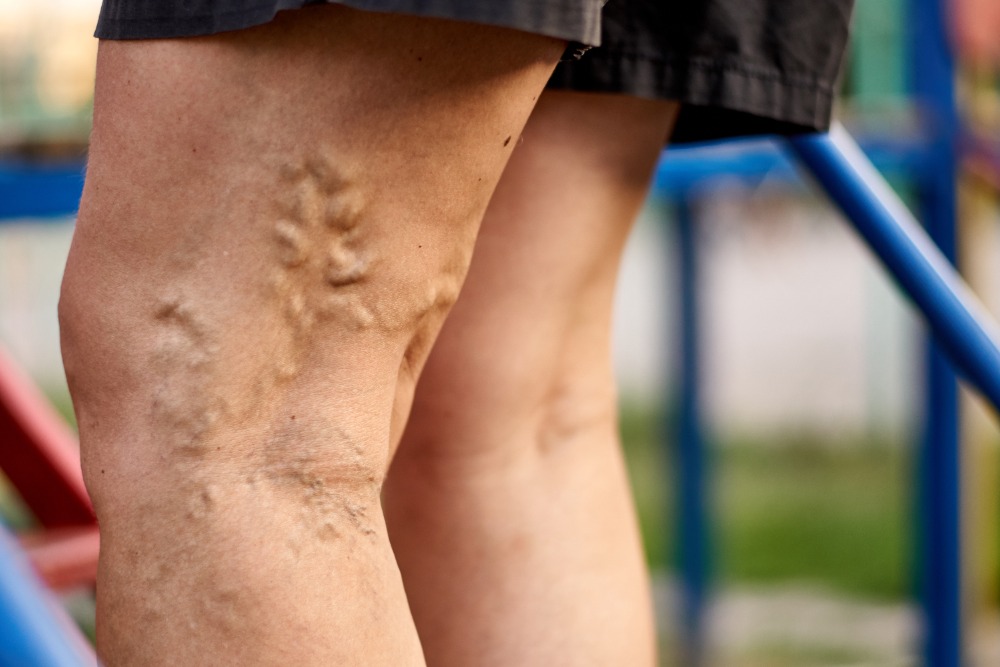Compression Sock Treatment in San Antonio, TX
What Are Compression Socks?
Compression socks—also called compression stockings or hoses—are snug-fitting garments that apply gentle, consistent pressure to your legs. This pressure helps improve circulation and reduce swelling by preventing blood from pooling in the lower extremities. Most compression socks are knee-high, though options vary in length and compression strength. Some offer light support, while others deliver a firmer, massage-like feel.
At Vein & Artery Surgical Consultants in San Antonio, our vascular surgeons may recommend compression socks as part of your treatment plan. After diagnosing your symptoms and conducting a thorough examination, they will determine the right fit and pressure level based on your specific needs. While this treatment can be a powerful tool for managing symptoms, compression socks should only be used under the direct guidance of a specialist in vein and artery disease.

What Are Compression Socks?
Compression socks—also called compression stockings or hoses—are snug-fitting garments that apply gentle, consistent pressure to your legs. This pressure helps improve circulation and reduce swelling by preventing blood from pooling in the lower extremities. Most compression socks are knee-high, though options vary in length and compression strength. Some offer light support, while others deliver a firmer, massage-like feel.
At Vein & Artery Surgical Consultants in San Antonio, our nephrologists may recommend compression socks as part of your treatment plan. After diagnosing your symptoms and conducting a thorough examination, they will determine the right fit and pressure level based on your specific needs. While this treatment can be a powerful tool for managing symptoms, compression socks should only be used under the direct guidance of a specialist in vein and artery disease.

Types of Compression Stockings
There are several types of compression socks available, each designed to support healthy circulation and manage swelling in different ways:
- Graduated Compression Socks: These apply the most pressure at the ankles, with pressure gradually decreasing up the leg. They’re ideal for improving upward blood flow and reducing ankle swelling.
- Anti-Embolism Stockings: Designed primarily to prevent blood clots, these socks offer tight compression around the ankles and feet, easing up toward the top.
- Support Hosiery: These provide even compression throughout the entire leg and are commonly used for general support and comfort.
- Length Variations: Depending on your condition, your provider may recommend ankle-high, knee-high, or thigh-high options to deliver the right level of support where it’s needed most.
Common Uses for Compression Socks
Compression socks are often recommended to treat or manage:
- Leg and ankle swelling
- Varicose veins
- Spider veins
- Peripheral artery disease
- Post-surgical recovery
- Prolonged immobility or travel

By improving blood flow and vessel alignment, these garments help reduce swelling and prevent complications, such as clotting. However, using them without proper guidance can cause bruising or damage. Always follow the medical advice of your vascular surgeon when wearing compression stockings.
How Compression Socks Help with Vein Conditions
While your complete treatment plan will likely include interventions such as sclerotherapy or VenaSeal™, compression socks can be an effective way to manage symptoms of many vein and artery disorders. Conditions like varicose veins, chronic venous insufficiency, and other circulatory disorders may respond well to regular use. If your vein specialist recommends them, you’ll likely wear them daily and schedule check-ins to monitor progress and make adjustments as needed.
What to Expect When Wearing Compression Socks
At first, compression stockings may feel tight or uncomfortable, especially if you’re new to wearing them. As your body adjusts, they become easier to wear and begin to support healthier circulation. Some people may experience mild side effects, such as skin irritation or sensitivity to temperature. If your socks are too tight, you may notice bruising or reduced blood flow—signs that it’s time for a better fit. Your healthcare provider will ensure the socks are working correctly and safely.
Contact VASC today to schedule an appointment and learn if compression socks are a safe option for managing your symptoms.
